This lime pound cake recipe makes a soft and fluffy lime cake with a deliciously moist crumb. Topped with a simple glaze, this cake makes a lovely variation to the traditional pound cake and makes a great treat anytime of the day.
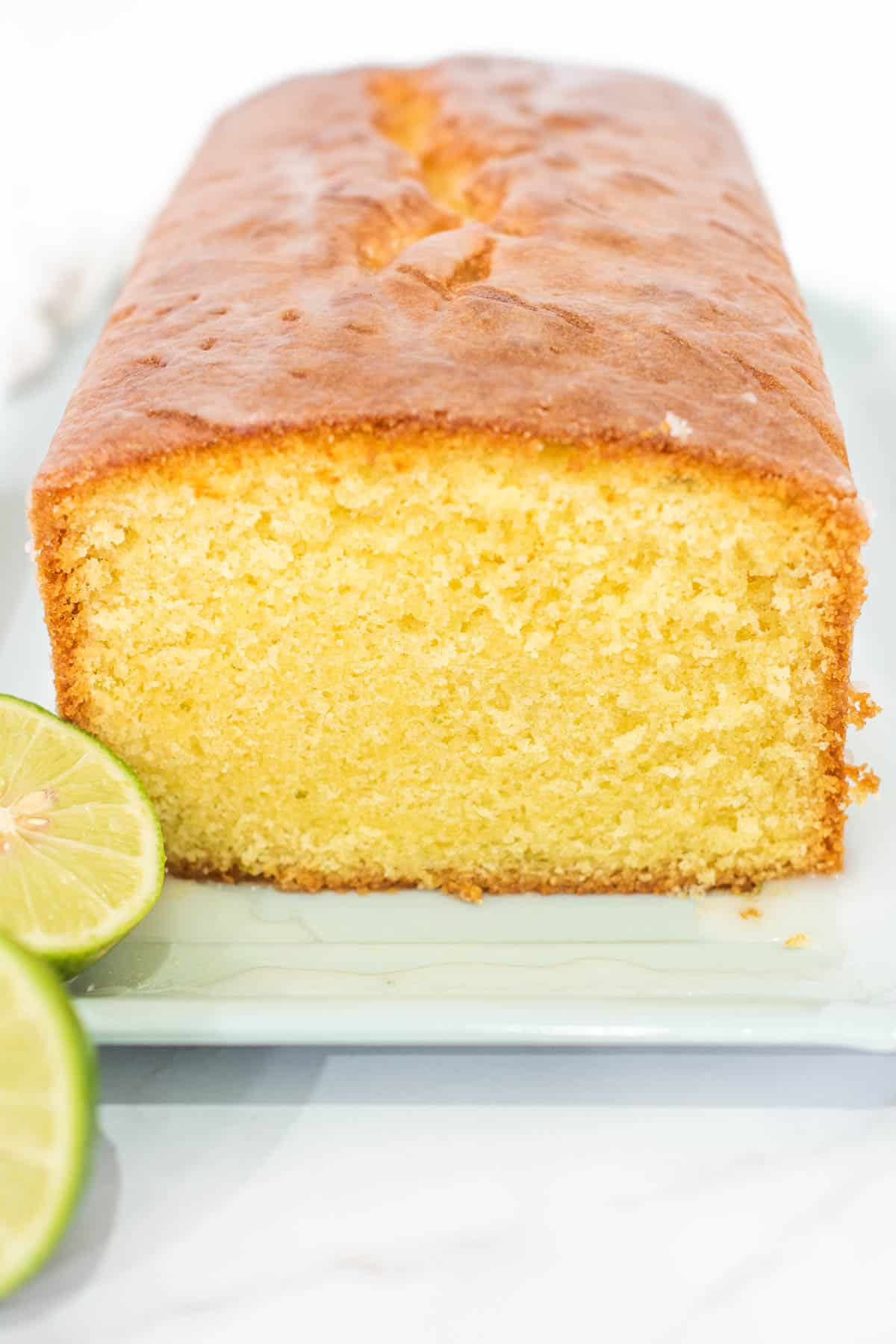
This lime pound cake is another one of my pound cakes collection and is adapted from my basic butter pound cake recipe. Here are some of my other pound cake recipes you can also check out:
Jump to:
❤️Why you will love this recipe
- This is a made from scratch pound cake recipe.
- The recipe requires only 5 main ingredients (basic ingredients that are easily available), i.e. flour, butter, sugar, eggs, limes and makes a super moist pound cake, with a great flavor.
- The sweet and tangy lime glaze makes this cake a perfect treat for someone with a sweet tooth. The cake can be enjoyed on its own, with a simple dredge of icing sugar, with plain sugar glaze or with a scoop of vanilla ice cream for a perfect dessert.
- It's sturdy enough for stacking, so you can easily double the recipe, bake it in two 7-inches round cake tins, and fill and frost the layers with a simple buttercream or cream cheese frosting for a lovely lime-flavored birthday cake or St. Patricks day treat.
📋Ingredients
As in a traditional pound cake, the basic ingredients for this lime pound cake are indeed basic - butter, sugar, flour and eggs. For this lime pound cake recipe, I have added both lime zest and lime juice. Here is the full list of the ingredients that go into this sweet and tangy lime pound cake:
Cake
- Butter - I use salted butter. If using unsalted butter, add an extra small pinch of salt to the recipe.
- Granulated sugar (caster sugar) - it is best to use granulated white sugar. Coarse sugar will leave your cake with specks of sugar on the surface after baking.
- Self-raising flour + baking powder + salt - these need to be mixed together and sifted into the cake batter.
- Eggs - use large size eggs.
- Lime juice + zest - use fresh juice and zest for best results. Strain the juice to remove any seeds.
- Milk - use whole milk for a rich cake or make your own with powdered milk.
Lime glaze:
- Powdered sugar (icing sugar) - sift before using to break any lumps.
- Lime juice - this adds a lovely tangy flavor to the sugar glaze. Use freshly squeezed juice and strain to remove any seeds or pulp.
- Warm water - to thin the glaze to a dripping consistency.
*Refer to the recipe card below for full list of ingredients and exact quantities. For best results, use a digital kitchen scale where applicable*
🧾Substitution and Variations
- Self raising flour can be substituted with all purpose flour and baking powder. For every 225g of all purpose flour, add one and half teaspoons of baking powder. Mix well and sift at least 3 times. To make 180g of self raising flour as indicated in the recipe card below, use 180g of all purpose flour and one teaspoon plus another one fifth teaspoon of baking powder.
- Salted butter can be substituted with unsalted butter, however, add an extra small pinch of salt in your recipe.
- Whole milk can be substituted with skimmed milk.
- This recipe makes an 8 inches by 4 inches loaf cake. You can always bake it in a round cake tin if you wish. This recipe would make a 7 inch round cake with a height of about 1.5 to 2 inches. Reduce the baking temperature by 5 minutes when baking in a round cake tin as the cake will be thinner and is spread wider.
- To make lime bundt cake or tube cake, double the recipe and bake the cake in a bundt pan or tube pan with a capacity for 6 cups of batter.
- This recipe yields approximately 3 cups of batter. To make mini bundt cakes or loaf cakes, scale the recipe accordingly to fit your mini bundt pans or loaf pans. Baking times will vary according to the size of the tins or pans.
- For a key lime pound cake recipe with key lime flavor, replace the regular limes (juice and zest) in the recipe with key lime juice and key lime zest. There will not be any noticeable difference in taste or end result when using either type of limes. To a lemon flavored pound cake, refer to my lemon pound cake recipe.
This recipe has not been tested with other substitutions or variations. If you do try, please let me know in the comments section below!
👩🍳How to Make
Mixing the cake batter

- Cream butter and sugar in a medium-sized bowl until light and fluffy for a good 2 minutes with an electric mixer on medium speed (with a paddle attachment). Scrape the sides and bottom of the bowl at one-minute interval to ensure the butter and sugar are thoroughly beaten.
- Next, add the eggs into the creamed sugar and butter mixture. Do this one at a time. And each time, beat the egg well until you don’t see any traces of egg in the batter before adding the next one.
- Sift the flour, baking powder and salt into a large bowl. Add this flour mixture (dry ingredients)into the creamed mixture in 3 batches and alternate it with the milk and the lime juice. Start the process with flour and end it with flour as well.
- And finally, stir in the grated lime zest and mix it well.
- Pour batter into a well-greased and floured loaf tin and bake for 40 to 45 minutes in a preheated oven at 175 degrees Celsius. Test the cake at 35 minutes by inserting a skewer or a cake tester in the middle of the cake. If there is no wet batter sticking to the cake, it is done and can be removed from the oven.
- Remove the cake from the oven and let it cool down in the tin for 5 minutes before turning it out onto a wire rack (cooling rack) to cool further. Wrap the cake with cling wrap once it cools down to a warm temperature and chill it overnight. Bring the cake to room temperature before serving. Leftovers can be kept at room temperature for a good 4 to 5 days.
Making the lime sugar glaze
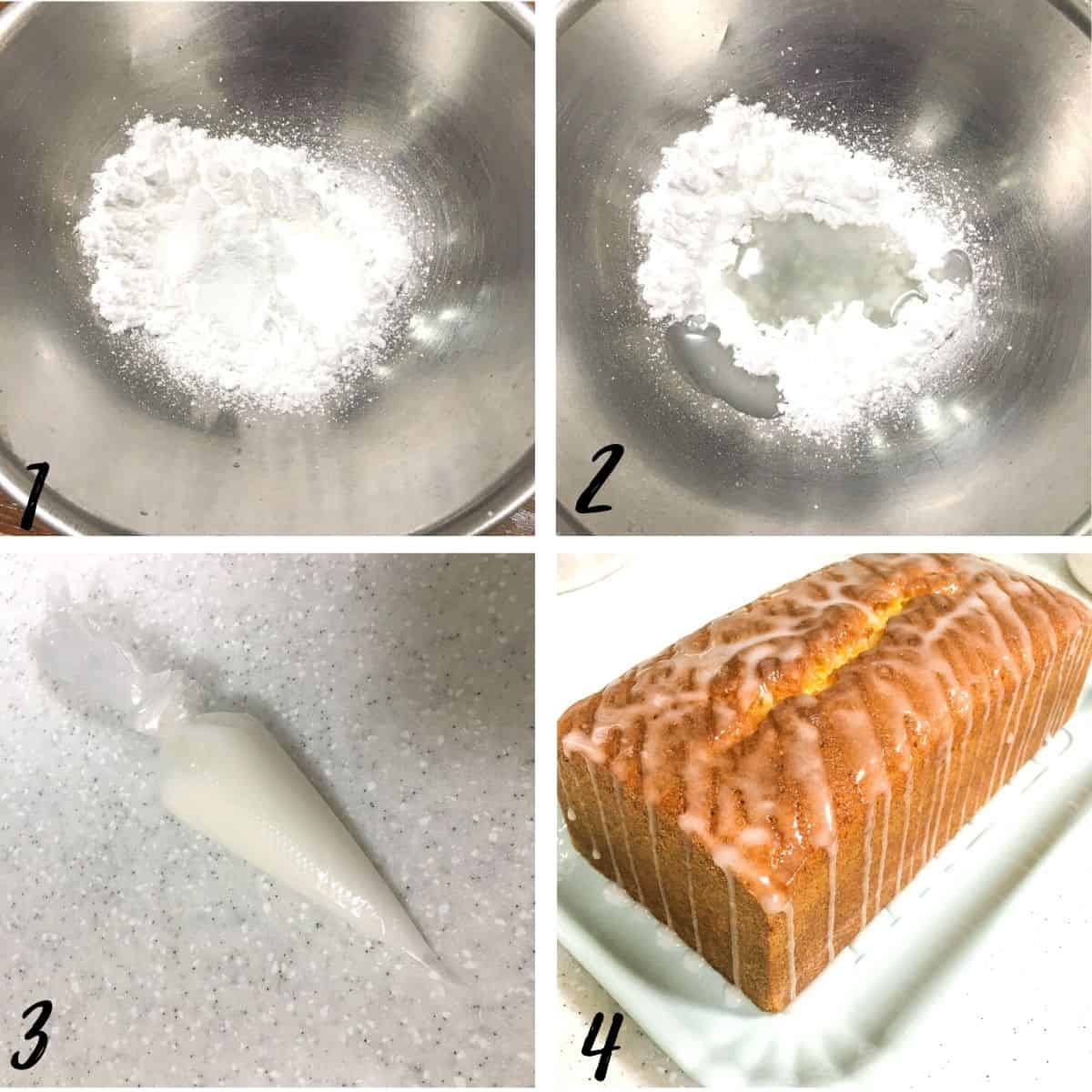
- Measure and sift the icing sugar into a small bowl.
- Add the lime juice and water and mix until the glaze icing is smooth.
- Transfer the lime glaze icing into a piping bag.
- Make a small snip at the tip and drizzle the glaze in a diagonal pattern on the cake. The glaze will be quite runny. If you want it to be stiffer, add more icing sugar or reduce the amount of water used.
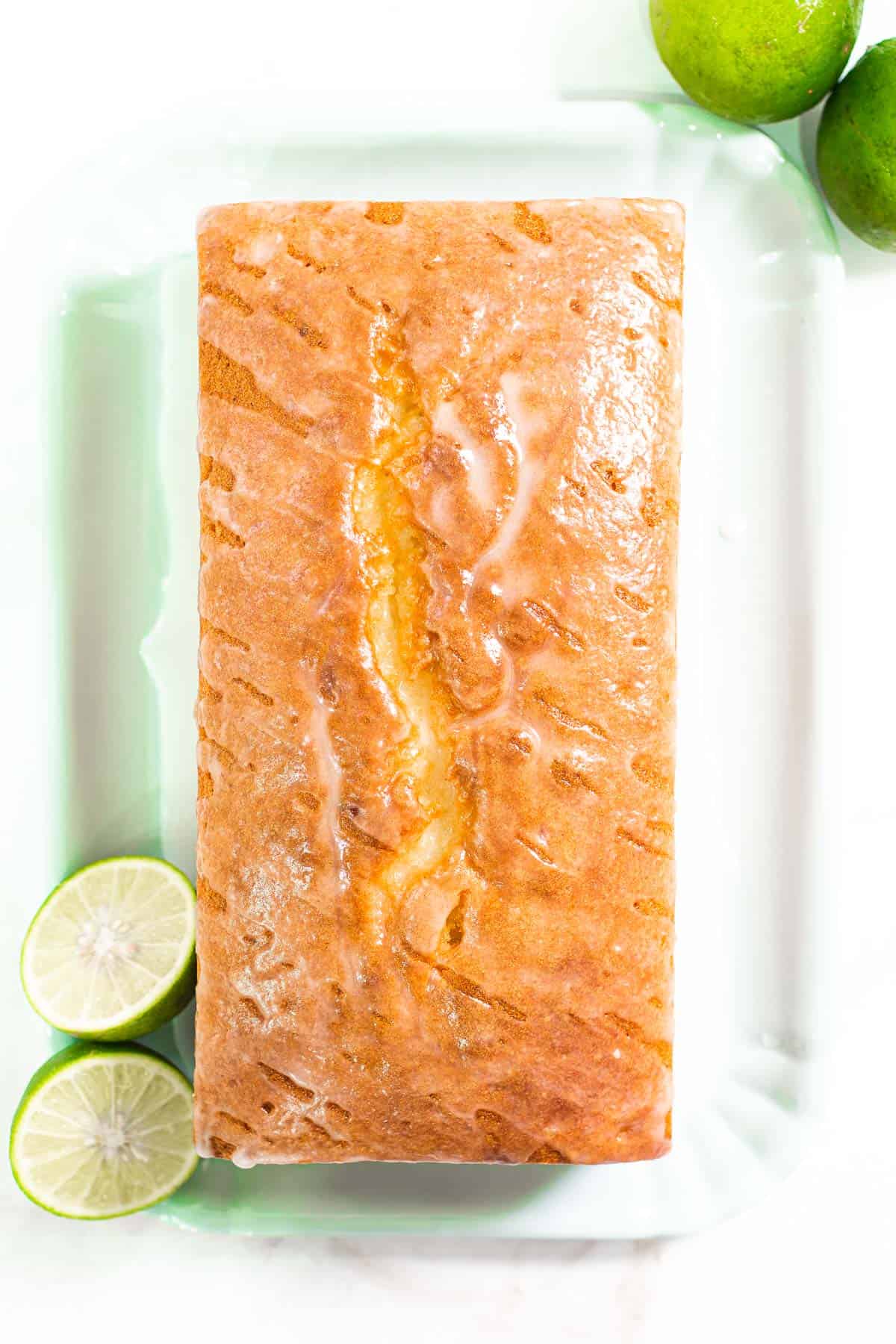
🍽️Serving & storage
- This lime pound cake lasts at room temperature for a good 4 to 5 days, provided it is handled without any contact with moisture.
- It is best refrigerated if intended to be kept longer. Always keep the cake covered (in an airtight container) to avoid it from drying up.
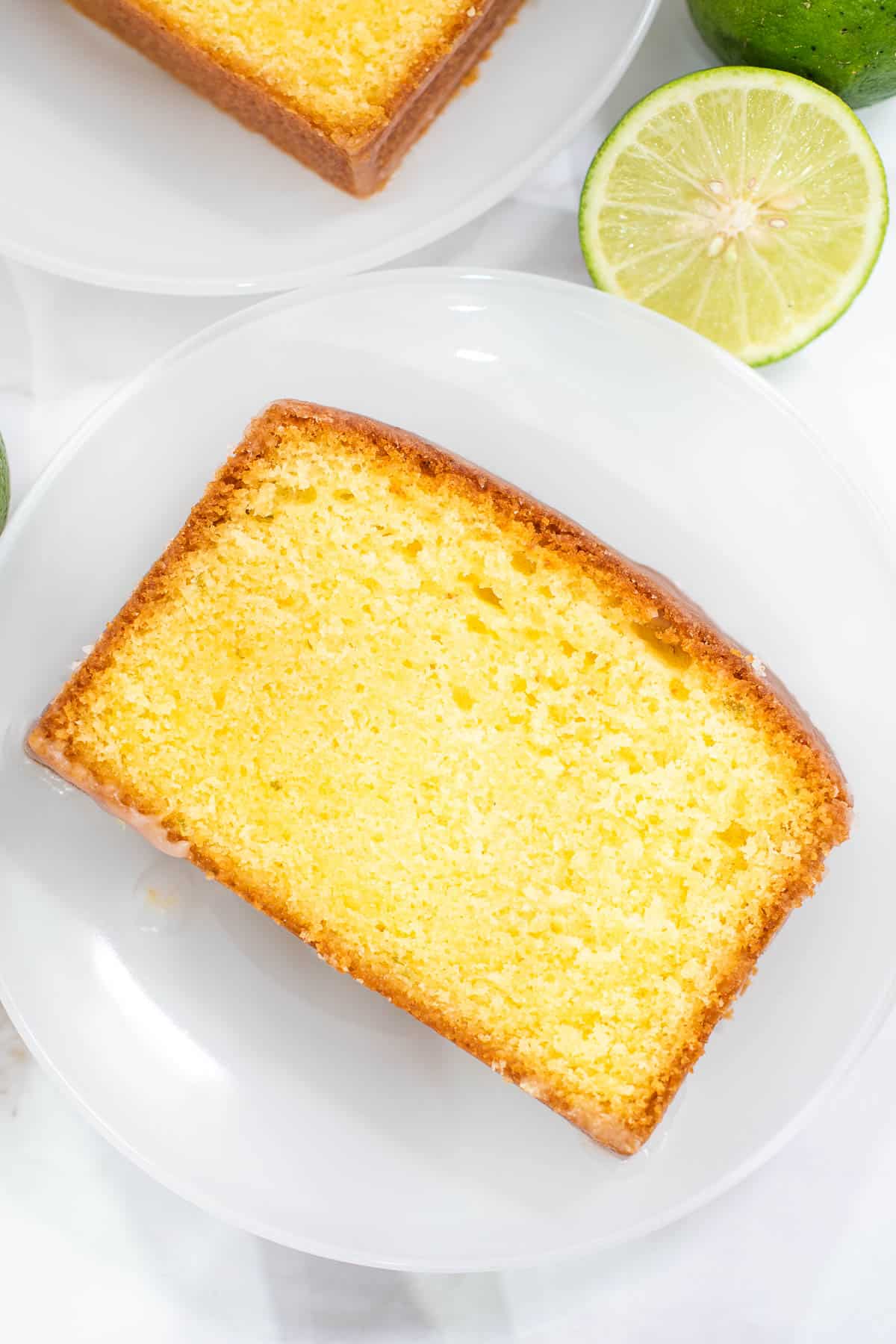
💡Expert Tips
- Creaming the butter and sugar is the first step in making this lime pound cake. Well creamed butter and sugar will make soft and fluffy pound cakes. For this recipe, it is best that both the ingredients are beaten for at least 2 minutes. Scrape the sides of the bowl at one-minute interval. This will ensure the butter and sugar are thoroughly mixed. For best results, use room temperature butter.
- Sometimes, the cake batter curdles after the addition of eggs. This normally happens when the butter and eggs are of a different temperature. Ideally, both the butter and eggs should be at room temperature. If one of them is cold, the cake batter tends to curdle. To avoid this, make sure all your ingredients are at room temperature. If the curdling still happens, fold in some flour. Do not add the milk or lime juice until the batter is no longer curdled. Once it is smooth (after adding the flour), continue with the liquids and the zest.
- Tips for a moist pound cake
- Do not overbake the cake. Overbaked cakes tend to be dry. Check the cake for doneness at least 5 to 10 minutes before the baking time is up. Insert a skewer in the center of the cake. If it comes out without any wet cake batter, the cake is done and can be removed from the oven.
- When cooling the cake on a wire rack, keep it covered with a kitchen towel on it. That way, the cake does not become dry. This is particularly so in dry environments.
- Also, if you do not intend to serve the cake on the same day it is baked, wrap it in cling wrap (plastic wrap) while it is still warm and refrigerate it. This way, the moisture in the cake remains in the cake. Simply bring it to room temperature before serving.
💭FAQs
Lime and key lime are different variants of the lime family. Limes are larger, with much thicker skin. Key limes, are round, much smaller, and with thin skin.
Key limes are green when unripe and turn yellow as they ripen. The juice from a green, unripen fruit is sourer than when it is ripe and yellow.
This lime pound cake recipe can be made using either the limes or key limes and the results will be the same.
This cake can be served plain. You can also use a simple icing sugar dredge or simple lime glaze. I chose to top mine with a thin lime sugar glaze. The consistency of the glaze is rather thin and runny.
Other frosting options for this lime pound cake are lemon buttercream or lemon cream cheese frosting.
You certainly can. I have used 2 tablespoons of lime zest and 2 tablespoons of lime juice in this cake. The resulting cake is mildly lime flavored. To match it, I made the lime glaze with a stronger lime taste. This complemented the cake well.
If you wish to have a more intense lime flavor in the cake itself, you can increase the amount of zest you add to the cake batter. You can also increase the amount of lime juice in the cake batter. Reduce the milk accordingly such that the amount of liquid added to the cake batter remains the same.
Pound cake is a classic cake recipe, and is said to have gotten its name based on the weight of its ingredients.
There are 4 basic ingredients used to make a pound cake, i.e. flour, butter, eggs and sugar. And all these are added in equal proportions each which means one pound of butter, one pound of sugar, one pound of flour and one pound of eggs.
The lime pound cake recipe I have here is adapted from this basic pound cake recipe by reducing the proportion of the ingredients used and revising the measurement of eggs by quantity instead of by weight for easy making.
❤️More Recipes You Will Love
Do you like this recipe? Please leave a 5-star ⭐⭐⭐⭐⭐rating in the recipe card below and consider a review further down this page. I would love to hear from you. Thank you!
📖Recipe
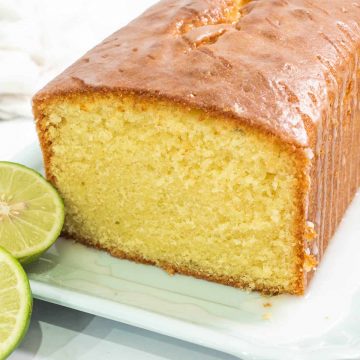
Lime Pound Cake with Easy Lime Glaze
For best results, use the metrics measurements. US customary measurements have not been tested and are only meant for guide.
Ingredients
Cake
- 180 g self-raising flour
- 180 g granulated sugar
- 180 g butter at room temperature
- 3 eggs at room temperature
- ½ teaspoon baking powder
- ⅛ teaspoon salt
- 2 tablespoon lime rind (from approximately 6 limes)
- 2 tablespoon lime juice
- 1 tablespoon milk
Lime Sugar Glaze
- 60 g powdered sugar (sifted)
- 1 teaspoon lime juice
- 1 tablespoon warm water
Instructions
- Preheat oven to 175 °Celsius.
- Beat butter and sugar till light and fluffy for about 2 minutes. Add eggs, one at a time, beating well after each addition.
- In a separate bowl, sift flour, baking powder, and salt. Fold in the sifted ingredients into the creamed mixture alternately with milk and lime juice. Start and end with flour.
- Finally, fold in the grated lime rind.
- Pour the cake batter into a well-greased and floured loaf cake tin. Level the top.
- Bake the lime pound cake for 40 to 45 minutes until a skewer inserted in the center of the cake comes out without any wet batter.
- Remove the cake from the oven and let it cool in the tin for 4 to 5 minutes before turning it out onto a wire rack to cool further.
- To make the lime sugar glaze, sift the powdered sugar into a small bowl.
- Add the warm water and lime juice and mix until smooth.
- Transfer the glaze into a piping bag.
- Make a small snip at the tip of the icing bag and drizzle the glaze onto the cake generously.
Notes
- Sometimes, the cake batter curdles after the addition of eggs. This normally happens when the butter and eggs are of a different temperature. Ideally, both the butter and eggs should be at room temperature. If one of them is cold, the cake batter tends to curdle. To avoid this, make sure all your ingredients are at room temperature. If the curdling still happens, fold in some flour. Do not add the milk or lime juice until the batter is no longer curdled. Once it is smooth (after adding the flour), continue with the liquids and the zest.
- Tips for a moist pound cake
- Do not overbake the cake. Overbaked cakes tend to be dry. Check the cake for doneness at least 5 to 10 minutes before the baking time is up. Insert a skewer in the center of the cake. If it comes out without any wet cake batter, the cake is done and can be removed from the oven.
- When cooling the cake on a wire rack, keep it covered with a kitchen towel on it. That way, the cake does not become dry. This is particularly so in dry environments.
- Also, if you do not intend to serve the cake on the same day it is baked, wrap it in cling wrap while it is still warm and refrigerate it. This way, the moisture in the cake remains in the cake. Simply bring it to room temperature before serving.


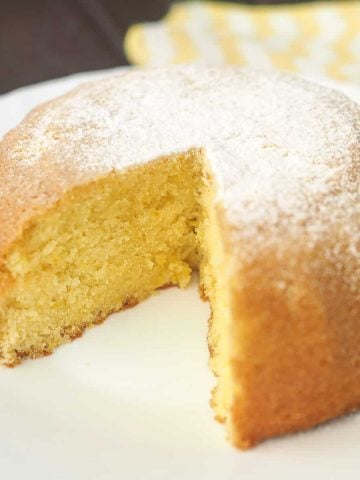
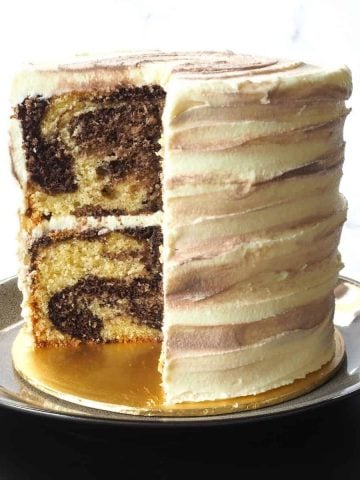
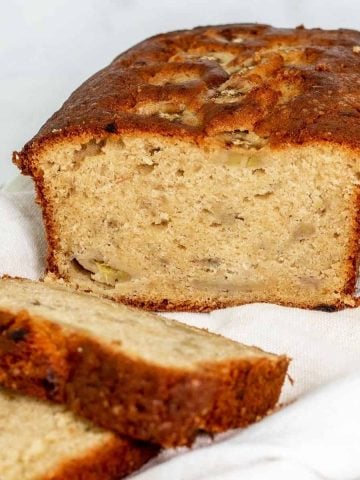
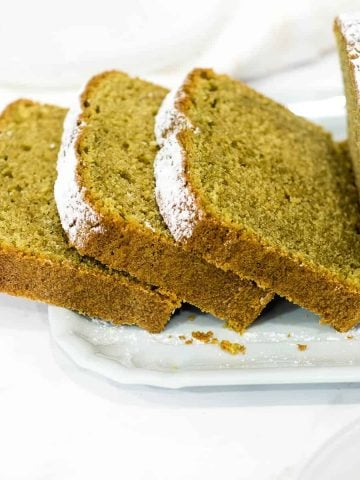
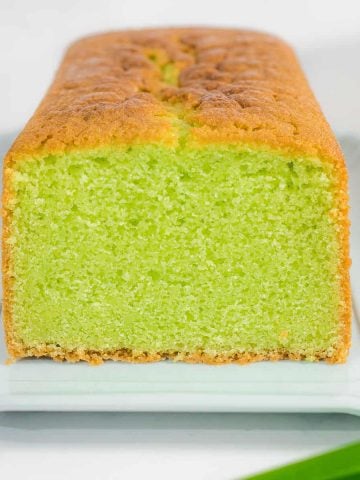
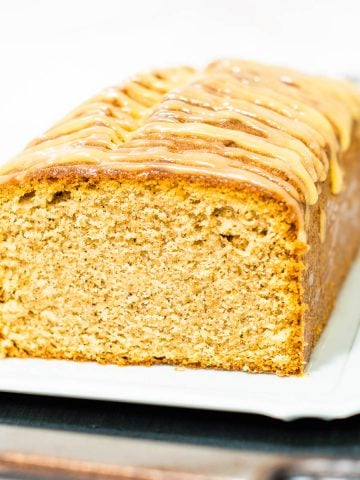
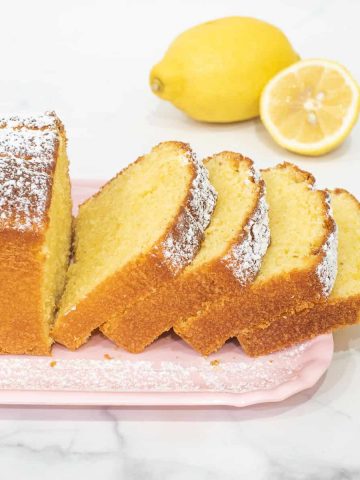
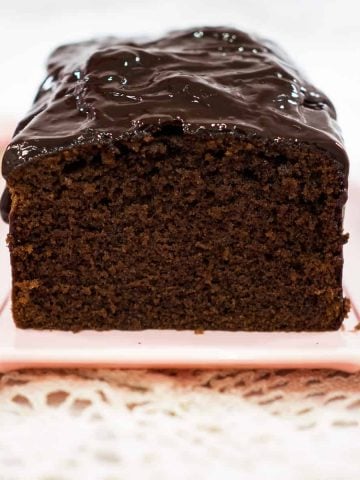

Leave a Reply